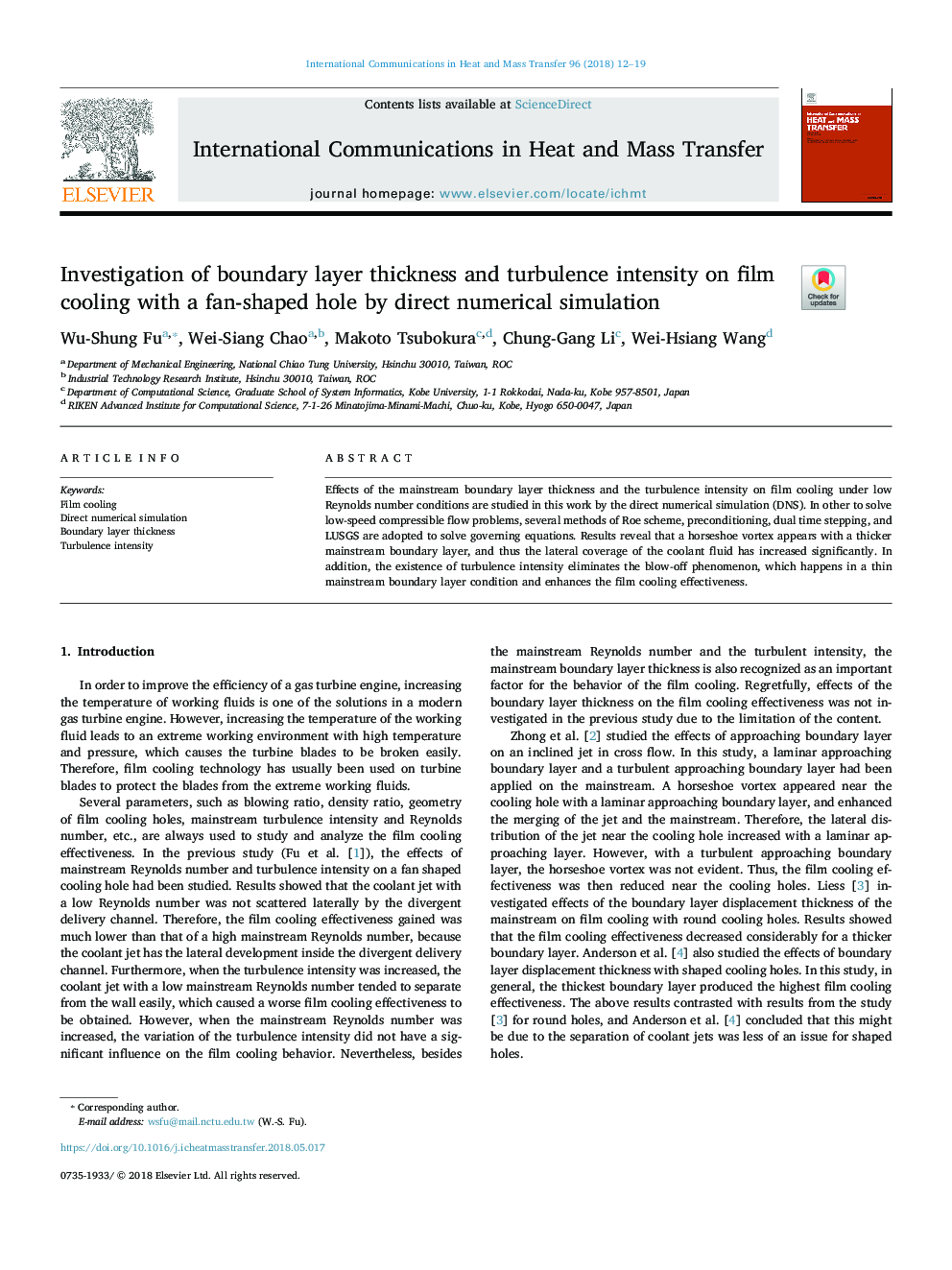| Article ID | Journal | Published Year | Pages | File Type |
|---|---|---|---|---|
| 7052755 | International Communications in Heat and Mass Transfer | 2018 | 8 Pages |
Abstract
Effects of the mainstream boundary layer thickness and the turbulence intensity on film cooling under low Reynolds number conditions are studied in this work by the direct numerical simulation (DNS). In other to solve low-speed compressible flow problems, several methods of Roe scheme, preconditioning, dual time stepping, and LUSGS are adopted to solve governing equations. Results reveal that a horseshoe vortex appears with a thicker mainstream boundary layer, and thus the lateral coverage of the coolant fluid has increased significantly. In addition, the existence of turbulence intensity eliminates the blow-off phenomenon, which happens in a thin mainstream boundary layer condition and enhances the film cooling effectiveness.
Related Topics
Physical Sciences and Engineering
Chemical Engineering
Fluid Flow and Transfer Processes
Authors
Wu-Shung Fu, Wei-Siang Chao, Makoto Tsubokura, Chung-Gang Li, Wei-Hsiang Wang,
